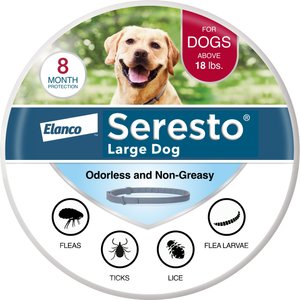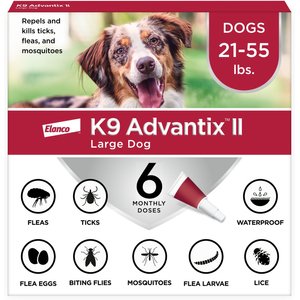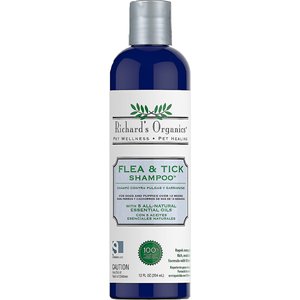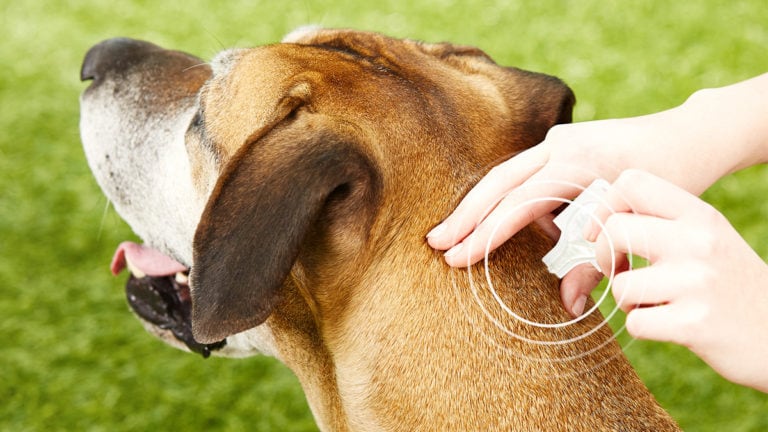Pet parents are sure to recognize the telltale signs. There’s the scratching, licking and biting; red patches of skin; and maybe even hair loss. If you’re worried your pet is suffering from a flea infestation, it can be a trying and stressful time for the entire household.
Luckily, flea infestations don’t have to be quite as traumatic if you know the correct steps to take once you’ve identified flea bites on your pet. We consulted Dr. Ann Hohenhaus, staff doctor at NYC’s Animal Medical Center, for a list of steps pet parents should take to help alleviate the issue.
Here’s what you can do to deal with fleas:
1. Make a quick trip to your vet. Your first step towards flea control for cats and dogs should always be your veterinarian. “I think every pet with flea bites needs a trip to the vet, since the really good medications are by prescription,” said Dr. Hohenhaus. “This could be a quick-kill product, followed by a longer-lasting product that also breaks a flea’s life cycle.” These types of products are often labeled “insect growth regulators,” she added. Your vet has the expertise to help you determine which overall products—topical products, pills or collars—will work best for your pet’s situation. For example, something like Seresto’s 8 Month Flea & Tick Collar for Large Dogs and Puppies could work well for one dog, while another pup might benefit from a squeeze-on treatment. K9 Advantix II Flea & Tick Treatment for Dogs provides broad-spectrum control for fleas and ticks and kills mosquitoes, too. No matter which product your pet gets started on, she’ll receive proper dosing at the vet based on whether she’s a cat or dog and her body weight.
2. Find a good flea shampoo. For extra protection against flea bites and to soothe irritation and itching caused by dermatitis, you can try Richard’s Organics Flea & Tick Shampoo. This natural treatment is formulated to kill fleas and ticks while repelling mosquitoes and nourishing the coat using five essential oils and vitamin E.
3. Look for signs of anemia. Severe flea infestations can cause anemia, says Dr. Hohenhaus, especially in tiny puppies or kittens. If your pet is showing signs of anemia (tiredness, intolerance to or difficulty exercising, loss of appetite, etc.), be sure to let your vet know that as well, so that your pet can be rapidly, but gently, treated for both fleas and anemia together.
4. Have your pet tested for other health issues. Unfortunately, flea infestations often bring with them other pet health problems. “Fleas transmit tapeworms, tularemia, blood parasites and plague,” said Dr. Hohenhaus. “Your veterinarian may recommend testing or treatment for these infestations.”
5. Treat the environment. Treating your pet is obviously your main concern if you suspect flea and tick problems, but after you have your pet’s health under control, you need to also treat your pet’s environment. “Fleas spend most of their time off your dog or cat, and they can be in your carpets, bedding and your pet’s bed,” warns Dr. Hohenhaus. “You can use the do-it-yourself method—launder everything you can in hot water, vacuum everywhere and throw out the bag when you are finished, then carefully follow the instructions using flea bombs to kill off the rest of the fleas.” If that doesn’t work for you, you could always hire a licensed exterminator, instead. Vet’s Best Natural Flea + Tick Home Spray uses a blend of peppermint oil and clove extract to control and kill fleas, flea eggs and ticks on contact in all the places they hide—including rugs, carpets and pet bedding. It acts as a mosquito repellent, as well. Virbac’s Knockout Area Treatment Spray quickly kills adult and larval fleas and ticks and can be sprayed in all the hard-to-reach areas around the home.
Share:














